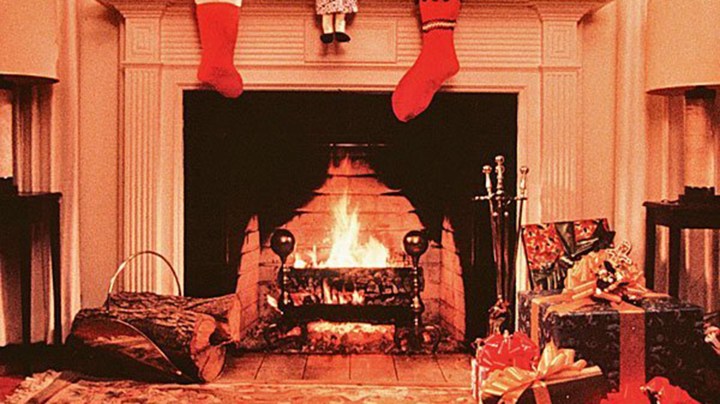
Yule log may be a chestnut, but it’s good business
Yule log may be a chestnut, but it’s good business

Television’s yule log has been part of American Christmases for almost 50 years. A lot of kids have opened their presents in front of that image of a roaring fire accompanied by 1960s versions of classic carols.
The yule log was first broadcast on Christmas Eve, 1966 by New York television station WPIX. The idea was to give apartment-bound New Yorkers a flavor of an old-fashioned fireplace. It caught on.
The original film from that year, which was shot at Gracie Mansion, official home to New York’s mayor, only lasted a few years. WPIX asked to return there to shoot a new version, but the answer was no. During the original filming a spark from the fire had flown out and landed on an antique rug, causing damage.
So WPIX began searching the country for just the right fireplace. They found it in California, of all places. The yule log so many people still watch, with its leaping flames, glowing coals, and gleaming brass andirons on either side, conjures up the very heart of a winter night. But it was filmed on a blistering August day in 1970, while crew members sweated in the foreground.
Ron Simon is curator for television and radio at the Paley Center for Media in New York. He said television critics at the time were pretty snooty about the yule log broadcast. He said they’d hardly have believed it could survive into the 21st century.
It almost didn’t. The show ran each Christmas until 1989. That’s when the station that created it, WPIX (now, PIX 11) got a new boss. He pulled it from the airwaves. Rolando Pujol of PIX 11 said by then, the yule log was seen as a relic.
“Not to mention the station lost money on it,” he said. “I mean that is valuable advertising we are not showing.”
But the audience didn’t sympathize with those business reasons. Fans saw the station as a Grinch. Reaction came swiftly. The station was inundated with letters from indignant viewers.
Still, the station didn’t air it — until the Christmas after the 9/11 attacks, when a new station manager decided comfort television was in order. WPIX brought the yule log back in all its kitschy glory.
Pujol says it’s still no moneymaker. The station has never made a DVD of the show, or even a YouTube version, because, he said, licensing all those old songs for endless plays would be hugely expensive. But you can find plenty of imitation burning logs out there, complete with sound of the fire crackling and fake snow falling.
Susan Lewis felt warm and fuzzy after coming across one of those versions when she was channel-surfing last Christmas. She lives in San Jose, Calif., and her television sits right where the fireplace used to be. She said life in Silicon Valley is fast-paced, and relaxing in front of a fire — be it real or fake — provides a comforting break.
She and her husband have a 46-inch flatscreen. But when the original yule log aired in 1966, most viewers didn’t even have the latest technology of the time — color television.
Ron Simon of the Paley Center looked back at the records and found only “about 20 percent of people had color.” He said the broadcast was used as a way to advertise the benefits of color television, and some electronics stores in New York agreed to air the show to help both the broadcast and their own color television sales.
That was Christmas past. The log is now firmly rooted in Christmas present. The yule log has its own Facebook page and Twitter account, and Rolando Pujol will be live tweeting this year’s broadcast.
OK, he said, none of this may translate to actual dollars. Still, “it’s good business in that it generates goodwill for the station,” he said. “And it’s also brand building and awareness for a hot minute, if you will forgive.”
And no one wants to extinguish that, he said.
There’s a lot happening in the world. Through it all, Marketplace is here for you.
You rely on Marketplace to break down the world’s events and tell you how it affects you in a fact-based, approachable way. We rely on your financial support to keep making that possible.
Your donation today powers the independent journalism that you rely on. For just $5/month, you can help sustain Marketplace so we can keep reporting on the things that matter to you.


















